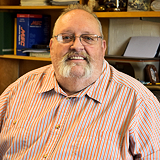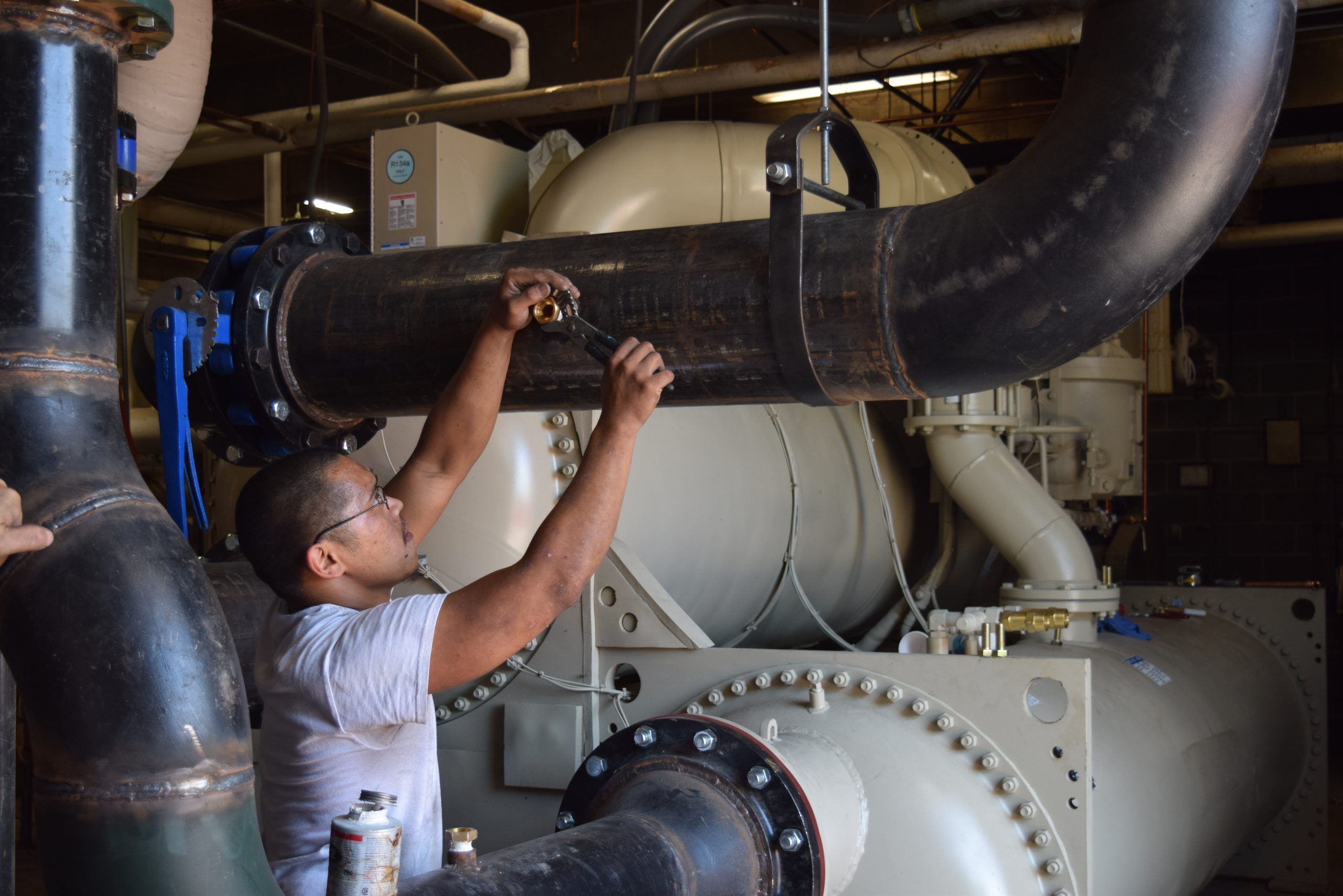
Wally Beets, A.A.S
General Superintendent
About:
Wally Beets has served with UT Facilities Services for more than 30 years. He is certified as an Aquatic Facilities Operator and a Certified Pool Operator in addition to many certifications from Trane, Daikin ,and Bell & Gossett for pumps, chillers, hydronic design, air flows and ventilation. In addition, Wally graduated with an associates degree in Industrial Maintenance from Pellissippi State. When Wally is out of the office, he enjoys UT football games, riding motorcycles and listening to music.

Basic Services
Air Conditioning Services maintains existing equipment as well as installation of new and replacement equipment, including rebuilding/refurbishing of chillers, maintenance/replacement of large motors and fans serving air conditioning systems, and maintenance, repair, and replacement of air conditioning controls (pneumatic, electric, and solid state).
Approximately 45,000 tons (12,000 BTU per ton) of cooling capacity is available, provided by the following equipment:
- Over 3,000 window air-conditioners, ranging in size from 5,000 to 32,000 BTU
- Approximately 3500 chilled water fan coil units
- Approximately 1500 through the wall P-TAC units
- Approximately 500 package & split systems ranging in size from 1 to 60 tons
- Seventy seven chillers (centrifugal [water cooled] and air cooled units) ranging in size from 20 to 1500 tons
Emergency Services
Emergency service for air conditioning equipment is available 24 hours a day.
- To report malfunctions with air conditioning equipment call the Work Order Office, 946-7777
- After 4:00 p.m. on weekdays, report emergencies to 946-7777
- After 12:00 a.m. Monday-Friday, on weekends, holidays, and days of administrative closing, report emergencies to 946-7777
Additional Services
Additional Services provided by Air Conditioning Services are listed below. For more detailed information visit the Service Guide.
- Provides maintenance, service, and repairs for stationary air compressors serving laboratory buildings on campus
- Testing and evaluation related to maintenance of fume hoods and associated fan systems
- Testing and evaluation of supply and exhaust air systems serving all campus buildings
- Testing, evaluation, repair or replacement of all building BAS control systems on campus
- Installs, maintains, and repairs all ice machines for food service, laboratories, and campus buildings
- Installs, maintains, and repairs refrigeration equipment with temperatures ranging from 98.7 degrees F to -180 degrees F
- Responsible for maintenance and service of food service refrigerators and freezers
- Responsible for maintenance and service of environmental growth chambers and hot boxes serving laboratories.
- Responsible for the proper operation of building ventilation systems
- Responsible for central vacuum systems used in laboratories (and some portable systems, upon request)
- Perform chemical analysis on cooling tower systems, building water loops (chilled water and heating systems), and geothermal water loops
- Repair and maintain pumps serving all water loops on campus
- Review design and construction for new facilities being built on campus
Heating
Air Conditioning Services is responsible for repairing all heating system equipment within buildings on the Main and Agricultural campuses as well as off-campus buildings. Both systems which use steam from the central steam plant, and those with separate or stand-alone systems. Approximately 100 different heating systems are maintained on campus in addition to the central steam system equipment. Heating systems located in various buildings on the campus include, electric, gas fired boilers and furnaces, and hydronic hot water heating systems.
Changeover from Air Conditioning to Heat
Facilities Services personnel change over building on 2 pipe systems from air conditioning to heating each fall. Due to the nature of the equipment installed throughout the campus, buildings must be changed over separately. Facilities Services performs the changeover on the basis of priorities established 1) to maintain required temperatures to protect equipment and research in progress, and 2) to serve the greatest number of individuals and activities.
Heating changeover may not begin until outside low temperatures have dropped below at least 50 degrees F for a minimum of three consecutive days.
 Phone: (865) 974-7776
Phone: (865) 974-7776 Email:
Email:  Fax: (865) 974-7786
Fax: (865) 974-7786